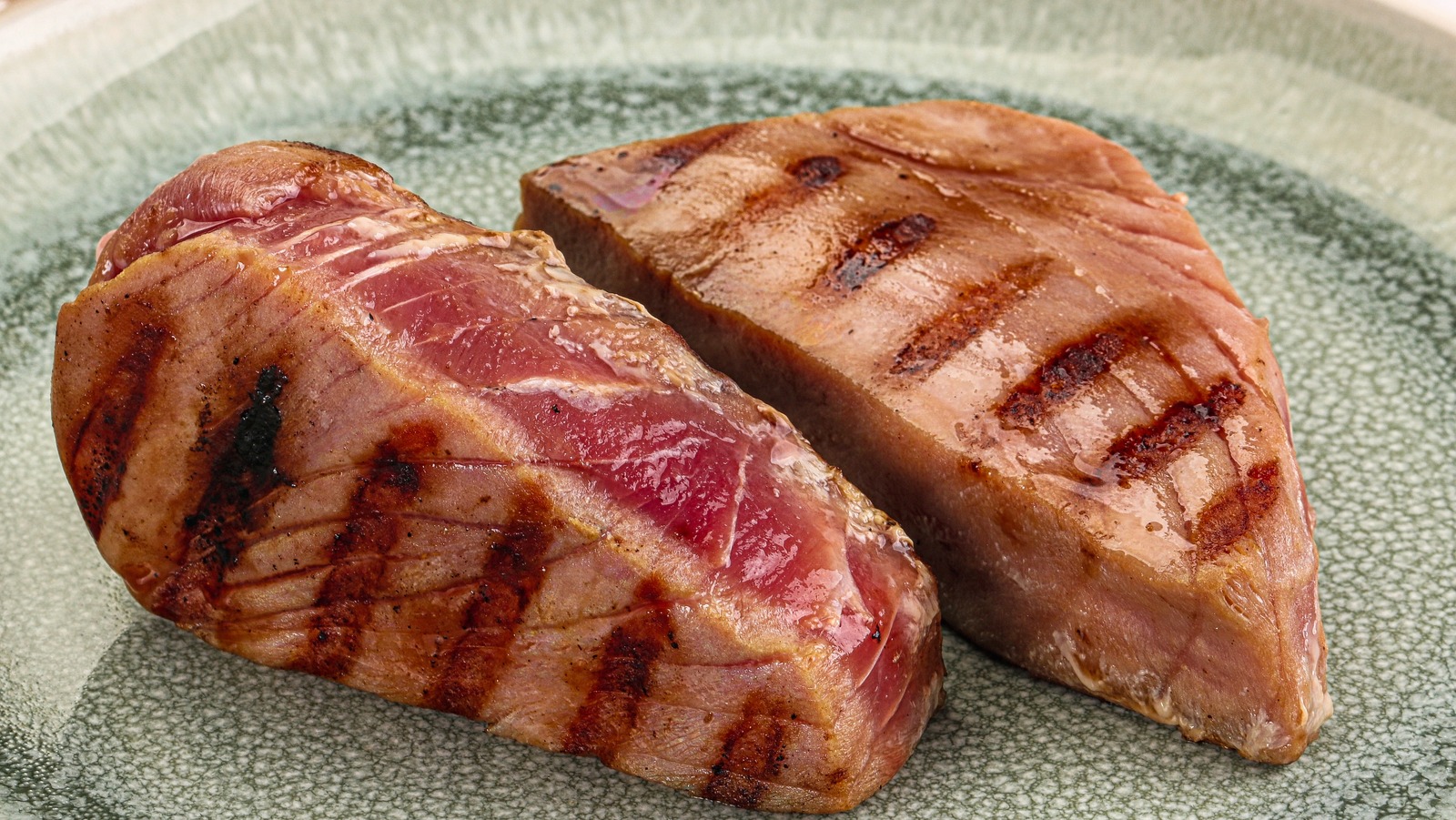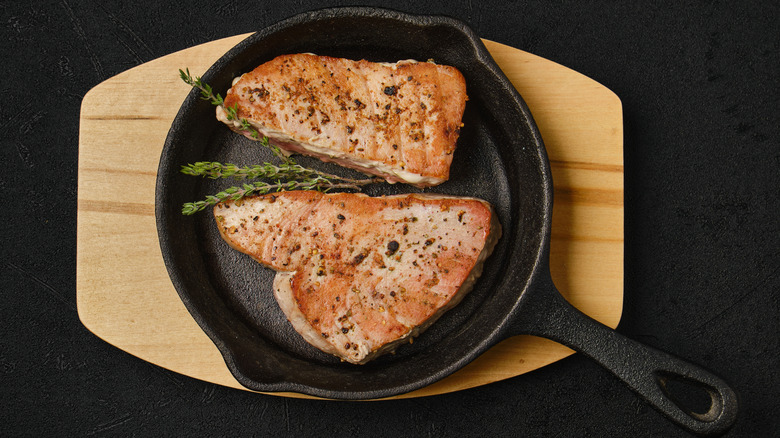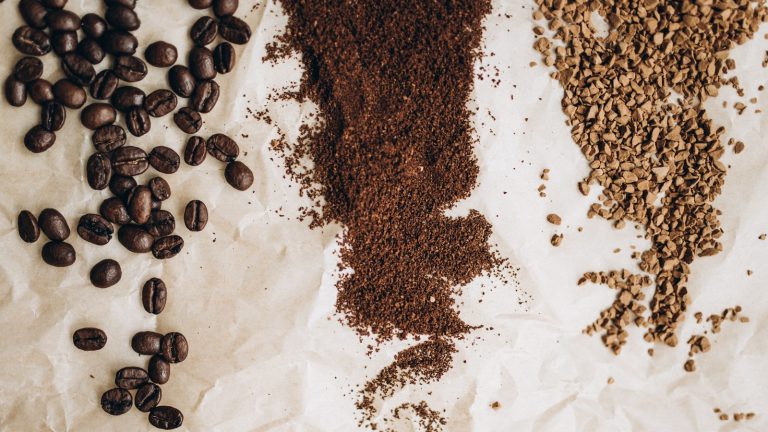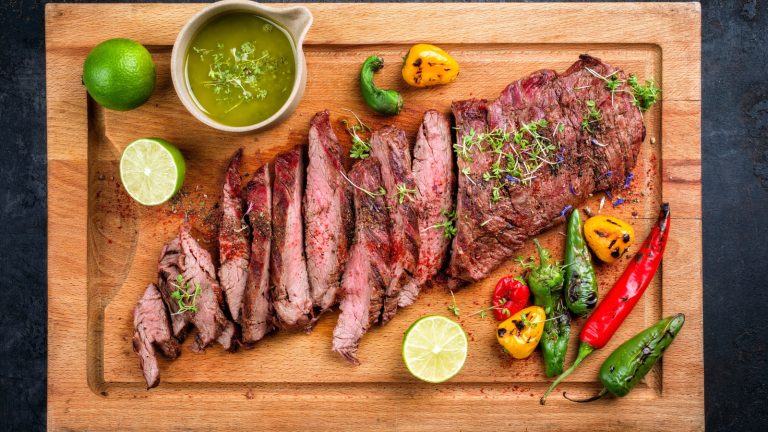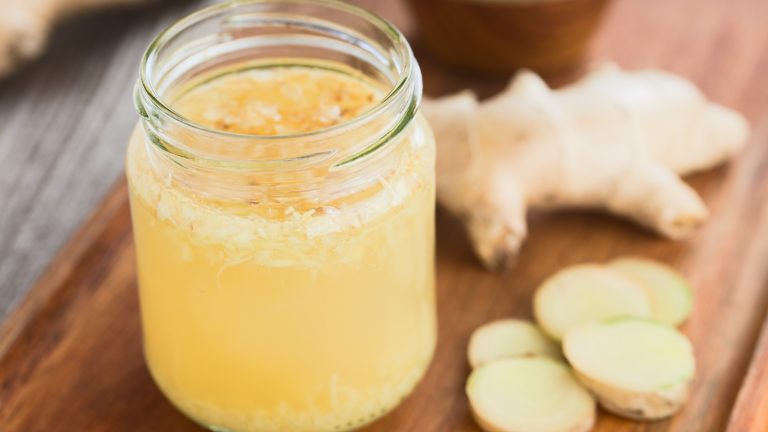Cooking ultra rare tuna steak can be tricky. It needs to be cooked just so — slightly browned on the exterior and beautifully pink in the center — or you’ll end up with a dry, gray steak that looks and tastes more like canned tuna than the bright, fresh, tender fish you expected. As Amy Choi, Senior Manager of E-Commerce at seafood purveyor Noble Fresh Cart, explained when speaking exclusively with Chowhound, “Extra rare preparation preserves [tuna’s] rich flavor, melting texture, and vibrant color, offering a more luxurious eating experience.” But how do you make sure that rare tuna is still safe to eat? According to Choi, you can minimize the risk of parasites and bacteria by cooking the steak over high heat and by using previously frozen or sushi-grade tuna.
You don’t need to cook tuna steaks for long to get the best flavor. “Tuna, especially high-quality cuts like bluefin, has a buttery, tender texture when it’s raw or barely cooked,” Choi notes. To preserve that taste and texture, “the safest method is searing tuna steaks over high heat for a very short time (about 30 to 60 seconds per side) in a very hot pan or on a grill.” She specifically recommends doing a quick sear in a cast iron skillet with a thin layer of oil, making sure to pat the fish dry first. For seasoning, you can either keep things simple and use some salt and pepper, or crust the steak lightly with sesame seeds. “Heat the pan until it’s smoking hot,” she advises, noting that the length of time on the pan will depend on the thickness of the steak.
The best temperature for cooking tuna steaks safely
The U.S. Food & Drug Administration says all finfish should be cooked to an internal temperature of 145 degrees Fahrenheit. But, for taste and texture purposes, the best temperature for a tuna steak is 90 degrees Fahrenheit. However, you don’t need to get the temperature up even that high. The internal temperature of a tuna steak can increase by 25 degrees Fahrenheit while resting off the heat, so you can take it out of the pan or off the grill at 65 degrees Fahrenheit.
Thankfully, sushi-grade tuna is considered to be fairly harmless when it comes to food safety. FDA Food Code requires fish meant to be eaten raw be stored frozen for specific amounts of time and at specific temperatures. However, large tuna like bluefin, yellowfin, bigeye, and albacore are all exempted from those rules, even if they are being used for raw consumption. That’s because they are generally considered free of parasites.
There are some common mistakes you can make when marinating tuna steaks for cooking, such as using too much acid in the marinade or leaving an acidic marinade on for too long, allowing the acid to break down the fish before you’ve even cooked it. But the biggest mistake, based on Amy Choi’s suggestions, would be to cook it longer than you need to.


